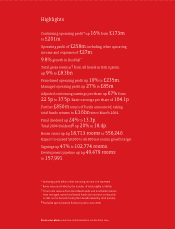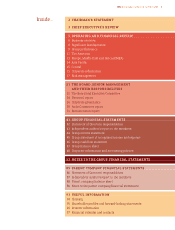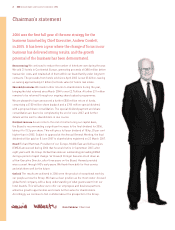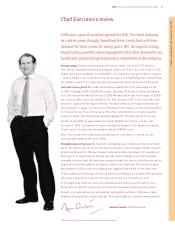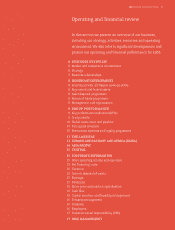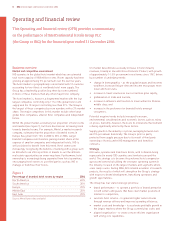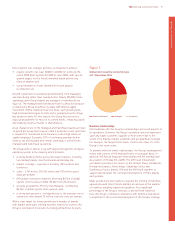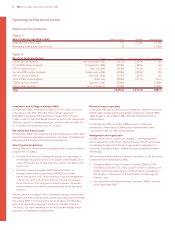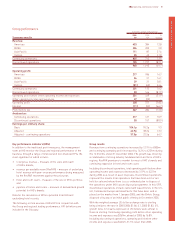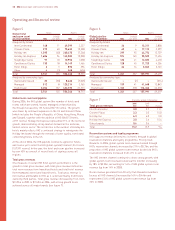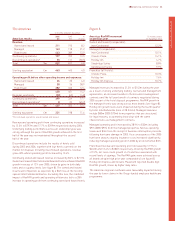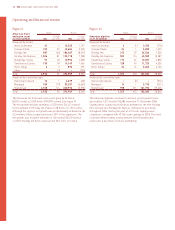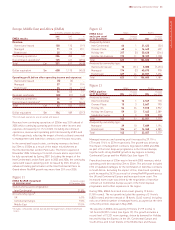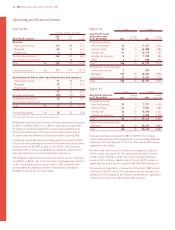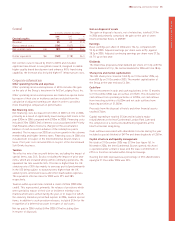Holiday Inn 2006 Annual Report Download - page 9
Download and view the complete annual report
Please find page 9 of the 2006 Holiday Inn annual report below. You can navigate through the pages in the report by either clicking on the pages listed below, or by using the keyword search tool below to find specific information within the annual report.
Executing the four strategic priorities is designed to achieve:
• organic growth of at least 50,000 to 60,000 net rooms by the
end of 2008 (starting from 537,000 in June 2005), with specific
growth targets for the InterContinental brand and the key
Chinese market; and
• out-performance of total shareholder return against
a competitor set.
Growth is planned to be attained predominantly from managing
and franchising rather than owning hotels. Nearly 550,000 rooms
operating under Group brands are managed or franchised (see
figure 2). The managed and franchised model is attractive because
it enables the Group to achieve its goals with limited capital
investment. With a relatively fixed cost base, such growth yields
high incremental margins for IHG, and is primarily how the Group
has grown recently. For this reason, the Group has executed a
disposal programme for most of its owned hotels, releasing capital
and enabling returns of funds to shareholders.
A key characteristic of the managed and franchised business model
on which the Group has focused is that it generates more cash than
is required for investment in the business, with a high return on
capital employed. Currently, 92% of continuing earnings before
interest, tax and regional and central overheads is derived from
managed and franchised operations.
The Group aims to deliver its growth targets through the strongest
operating system in the industry which includes:
• a strong brand portfolio across the major markets, including
two leading brands: InterContinental and Holiday Inn;
• market coverage – a presence in nearly 100 countries and
territories;
• scale – 3,741 hotels, 556,246 rooms and 130 million guest
stays per annum;
• IHG global reservation channels delivering $5.7bn of global
system room revenue in 2006, $2.0bn from the internet;
• a loyalty programme, Priority Club Rewards, contributing
$4.4bn of global system room revenue; and
• a strong web presence – holidayinn.com is the industry’s most
visited site, with around 75 million total site visits per annum.
With a clear target for rooms growth and a number of brands
with market premiums offering excellent returns for owners, the
Group is well placed to execute its strategy and achieve its goals.
Figure 2
Business relationships
IHG maintains effective business relationships across all aspects of
its operations. However, the Group’s operations are not dependent
upon any single customer, supplier or hotel owner due to the
extent of its brands, market segments and geographical coverage.
For example, the largest hotel owner controls less than 4% of the
Group’s total room count.
To promote effective owner relationships, the Group’s management
meets with owners of IHG branded hotels on a regular basis. In
addition, IHG has an important relationship with the International
Association of Holiday Inns (IAHI). The IAHI is an independent
worldwide association for owners of the Crowne Plaza, Holiday Inn,
Holiday Inn Express, Hotel Indigo, Staybridge Suites and
Candlewood Suites brands. IHG and the IAHI work together to
support and facilitate the continued development of IHG’s brands
and systems.
Many jurisdictions and countries regulate the offering of franchise
agreements and recent trends indicate an increase in the number
of countries adopting franchise legislation. As a significant
percentage of the Group’s revenues is derived from franchise
fees, the Group’s continued compliance with franchise legislation
is important to the successful deployment of the Group’s strategy.
Owned and leased Managed Franchised
Global room count by ownership type
at 31 December 2006
IHG Operating and financial review 7
Operating and financial review


